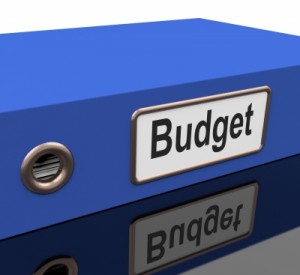Do you want to save more money? Do you want to start saving money in the first place? With so many people finding it difficult to save on a regular basis, I decided to talk to you today about using a saving challenge to help you get started saving or start saving more money.
I’ll introduce you to some popular saving challenges and show you the benefits of using them to help you build a nest egg of savings for yourself.
How a Savings Challenge Works
If you haven’t heard of a savings challenge before, here is how it works. You simply challenge yourself to save a certain amount of money each week.
There are various forms of saving challenges out there, which is great because you can pick one or modify one to fit your financial situation. Here is a run down of the most popular ones:
- 52 week challenge: During this saving challenge you save an increasing amount of money each week for a year. During the first week, you save $1. The second week, you save $2. Each week you increase the amount you save by $1. The end result is you save $1,300 in a year.
- 365 day challenge: During the challenge you save $1 every day for an entire year. By the end of the year, you have saved $365.
- 12 month challenge: During the 12 month challenge you save money once a month, every month. The amount you save is up to you, so the end result will vary based on this.
As I mentioned, you can modify these to fit your current financial life. So if you are in debt and cannot save a lot of money, then you might modify the 52 week challenge by saving $2 every week instead of increasing it.
The point is to make the challenge simple enough so you succeed but hard enough so you see a positive impact to your savings. By doing both of these, you help form the habit of saving money and make it easier for you to save in the long run.
Now that you know what a savings challenge is, let’s look as some of the benefits.
4 Reasons a Savings Challenge Works
#1. Makes You Aware of Your Spending
The first benefit of a savings challenge is that it makes you aware of your spending. When you are getting started, you have to pick a savings amount that you can handle.
On the surface, you might think that the 52 week challenge will be simple. But a closer look at your finances shows that you aren’t doing as well as you thought.
The result is a deeper look and understanding of how you spend money.
#2. Helps Motivate You to Save Money
Another benefit to the challenge is that it motivates you to save money. You see your savings increase every day, week or month and this motivates you to keep saving.
What I have found is that in the beginning, the savings amounts are small, so I really don’t pay close attention to my balance. Then I will randomly check my balance and be surprised at how large it is. The result is a rush of motivation to keep saving money.
#3. Motivates You to Save More
Because it is easy to save with a savings challenge, it motivates you to save more money.
When I first began a savings challenge, I was bit by the bug. I loved how easy it was and decided to save in other ways too. When I would buy something on sale, the amount of money I saved on the purchase would get transferred over to my savings account as well.
The result was a huge increase in my monthly savings.
However, you can get sucked in too much here. While it is great to be bitten by the savings bug, don’t try to save so much that your personal life takes a hit. If you try to save too much and cut out any fun, you will begin to resent saving money and stop saving altogether.
#4. Community Based For Support
The final benefit of a savings challenge is the social aspect. You can go online and find a handful of community based saving challenges. This is great as posting about your successes and struggles and reading others challenges will help to keep you motivated to reach your goals.
I know when I first started a challenge, joining a group played a huge part in my success. I learned things that I didn’t know and as a result was more successful with saving money in the long run.
Final Thoughts
At the end of the day, a savings challenge might be exactly what you need to create a savings habit for yourself. Just be sure to follow the points noted earlier about keeping it simple and modifying it so that you can succeed at saving money.
Ideally, once the challenge is over, you will be excited to save more money and improve your finances further, helping you to reach your financial goals.
More Money Saving Tips
- 30 Money Saving Tips
- 7 Passive Income Ideas to Make Extra Money
- 12 Things to Stop Doing to Save Money… Right Now!
- 35 Tips to Save Money on Food
- Extreme Ways to Save Money
- 11 Ways to Save Money on Groceries
- 5 Ways to Save Money When Your Spouse is a Spender
- 6 Successful Ways to Save Money This Year
- 26 Simple Ways to Save Money













